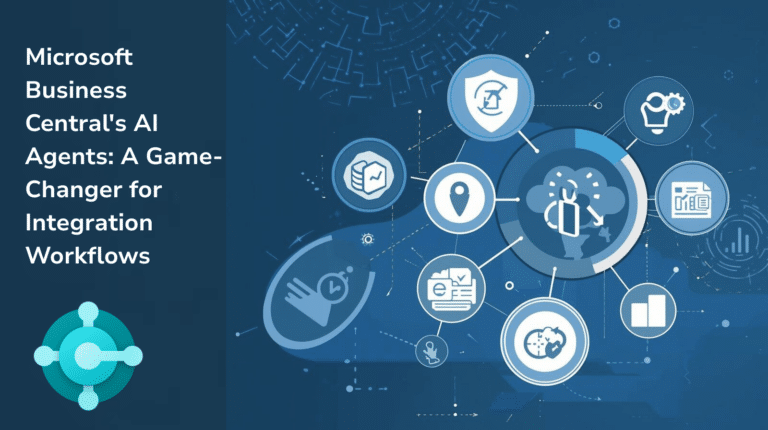Implementing an Enterprise Resource Planning (ERP) system can be critical to running your company more efficiently. It can enhance communication between previously disconnected departments and streamline operations. However, the success of an ERP system depends on avoiding implementation failures and ensuring proper execution. This comprehensive guide will delve into the various aspects of ERP implementation failures and highlight key points to help you avoid common mistakes and achieve a successful rollout.

Understanding the Importance of Learning from Mistakes
Before we delve into the common ERP implementation failures and mistakes associated with the implementation process, let’s consider some statistics that underscore the significance of this process:
- ERPs can cut administrative and operational costs by over 20%.
- 64% of ERP projects exceed their budget.
- The duration of 74% of ERP initiatives exceeds expectations.
- 95% of businesses improve their processes through ERP implementation.
By analyzing these statistics, we can appreciate the need for careful planning and diligent execution to minimize costs and shorten the implementation timeline.
Common ERP Implementation Mistakes
Implementing an ERP system involves a significant transformation for your organization. To ensure a successful implementation, avoiding the following common failures and mistakes is crucial.
Mistake #1: Not defining and planning goals
Implementing an ERP system is more complex than pressing an install button. It requires tailoring the implementation to suit your specific company’s needs. Creating a detailed roadmap outlining your ERP implementation goals is crucial. A well-planned roadmap ensures you obtain the desired solution and enables you to overcome distractions during the process. It also promotes collaboration and productivity among the implementation team, keeping everyone aligned and focused. While creating such a plan can be challenging, seeking assistance from professional consultants can streamline the process.
Mistake #2: Insufficient Commitment
Implementing an ERP system is a time-consuming and involved process, typically taking anywhere from 6 months to 2 years. It is essential to allocate sufficient time and resources to the project—plan for at least a year to accommodate potential complexities and refine the system. If you cannot commit the necessary time, consider delegating the responsibility to someone who can accelerate the process or delay the implementation until you can allocate adequate time. Additionally, assembling the right team dedicated to the ERP implementation is crucial for success.
Mistake #3: Lack of knowledge/failure to identify the ideal partner
The knowledge and expertise of the team involved in the ERP implementation are paramount. Your implementation will only face significant challenges with a solid understanding of ERP systems. While every organization goes through its first ERP implementation at some point, it is essential to assemble a strategic team. This team should include a project manager with meticulous attention to detail and leadership abilities. Additionally, key personnel from each department affected by the ERP implementation should be involved. It is vital to appoint a leader who possesses attention to detail, a grasp of daily operations, strong organizational skills, assertiveness, and the ability to manage various components and team members.
Mistake #4: Not Setting Milestones
Given the extended duration of ERP implementation, setting milestones is crucial to stay on track. These milestones can be classified as major and minor. The discovery and planning phases, as well as design, development, testing, deployment, and ongoing support, are considered major milestones. Within each major milestone, mini-milestones should break down the tasks involved. For instance, mini-milestones could include selecting team members, assigning roles, establishing timelines, and more during the planning stage. Setting milestones helps prevent ERP implementation failures and ensures a focused and timely progression.
Mistake #5: Failing to take data migration seriously.
Data migration, often overlooked, holds tremendous significance in the ERP implementation process. Neglecting the importance of data migration can have severe consequences. It is essential to meticulously prepare and ensure the proper importation of data. Beginning with poor-quality or poorly formatted data will hinder the new system’s effectiveness. Invest time and effort in cleansing and organizing your data to avoid this. This includes eliminating duplicates, correcting spelling errors, and validating card details. By starting with clean and accurate data, you can maximize the benefits of the ERP system from the moment it goes live.
Mistake #6: Addressing Fear of Change
While the top-level management team may be enthusiastic about the ERP migration, it’s common for various departments and end-users to be apprehensive. The success of your ERP implementation depends on the buy-in and cooperation of these individuals. It is crucial to appoint leaders within each department affected by the changes and keep them informed about the progress and impact of the implementation on their tasks and department. Conduct workshops and meetings to address their concerns and emphasize that the implementation aims to enhance effectiveness and facilitate better communication between departments. It’s important to convey that the ERP system supports rather than replaces them. Proactively addressing resistance to change can ensure a smoother and more successful transition.
Mistake #7: Not Planning for Post-Launch Maintenance
The implementation of an ERP system is a continuous process rather than a one-time occurrence. Like a living organism, it requires continuous monitoring, improvement, and maintenance. Creating a post-launch maintenance plan in the early stages of implementation is crucial. Assign teams to gather employee feedback regarding their experience with the software, identify issues they encounter, and suggest improvements. Your employees are valuable assets; their insights can help optimize the ERP system and ensure its long-term success. A post-rollout plan spanning at least two years allows you to prevent the system from becoming obsolete and ensures its effectiveness aligns with evolving organizational needs.
Mistake #8: Failure to Train
Deploying an ERP system across the entire company represents a significant change that impacts multiple departments simultaneously. The success of system adoption hinges on proper training and preparedness of employees. Employees need to train adequately to avoid employees reverting to old processes or finding manual workarounds, negating the benefits of the ERP system. To avoid this, consider a phased rollout approach involving department heads and project managers initially. These leaders can then train their respective teams, ensuring a cascading effect of knowledge and enthusiasm. The enthusiasm and effectiveness of these leaders in delivering training will significantly influence the system’s overall adoption by employees.
How to avoid ERP implementation failure?
Implementing an ERP system is a complex task that requires careful planning and execution. According to industry reports, many ERP projects need to meet their objectives, which can cause concern. However, with the right approach and adherence to best practices, you can increase the chances of a successful implementation.
Here are eight golden rules to follow in order to avoid ERP implementation failures:
1. Understand the Purpose of the Project
Before embarking on an ERP project, evaluating whether a full replacement is necessary or if existing systems can be optimized to meet your needs is essential. Sometimes, fine-tuning the existing solution can deliver the desired benefits, saving time and resources.
2. Create a Clear Vision
Establish a clear vision for the project by identifying the problems to be solved, desired outcomes, and required financial resources. This consensus is crucial to control the project scope and gain management buy-in. Conducting a Business Information Review can help structure the plan and establish a well-defined vision.
3. Determine Project Ownership
Treat the ERP implementation or upgrade as a business project, not just an IT project. It’s important to have key sponsors and champions at all organizational levels who understand the project’s vision and are committed to its success.
4. Carefully Allocate Resources
Underestimating the time, costs, and resources required for an ERP implementation is a common reason for failure. Understand the commitment and expertise needed from internal resources and consider supplementing with external consultants. Choose a consultancy that aligns with your business and has experience with your chosen ERP solution.
5. Be Mindful of Customizations
Customizations can enhance an ERP implementation, but excessive customization can complicate the project. Strike a balance by properly identifying, justifying, implementing, and managing customizations based on your needs.
6. Prioritize Testing
Thoroughly test the developed solution before full implementation. While the responsibility for testing lies with the client, engaging experts can ensure comprehensive testing. Consider working with a consultancy incorporating testing in their implementation methodology to achieve a successful outcome.
7. Invest in Training and Post-Implementation Support
Lack of user training can lead to issues and failed adoption of the ERP system. Take advantage of the training and support the implementation partner offers to effectively ensure widespread acceptance and address any concerns.
8. Maintain Clear Communication
Establish clear communication channels within the project team, both internally and externally. Everyone should work towards the same goals, with well-defined processes and escalation routes. Regularly update the wider business on progress and prepare them for upcoming changes to gain their buy-in and ensure successful adoption.
Final thoughts – Choosing the Right ERP implementation partner
By following these guidelines and working with a reliable ERP partner, you can join the 25% of organizations that achieve successful ERP implementations. Remember, a well-implemented ERP system can deliver significant returns on investment, drive growth, and ensure long-term success.
Additionally, selecting the right ERP implementation partner is crucial to increase the chances of a successful ERP implementation. Target Integration is a reputable and reliable choice for your ERP implementation needs. With their proven track record and expertise in recommending the best-fit solution for your business, they can play a vital role in ensuring successful implementation.



